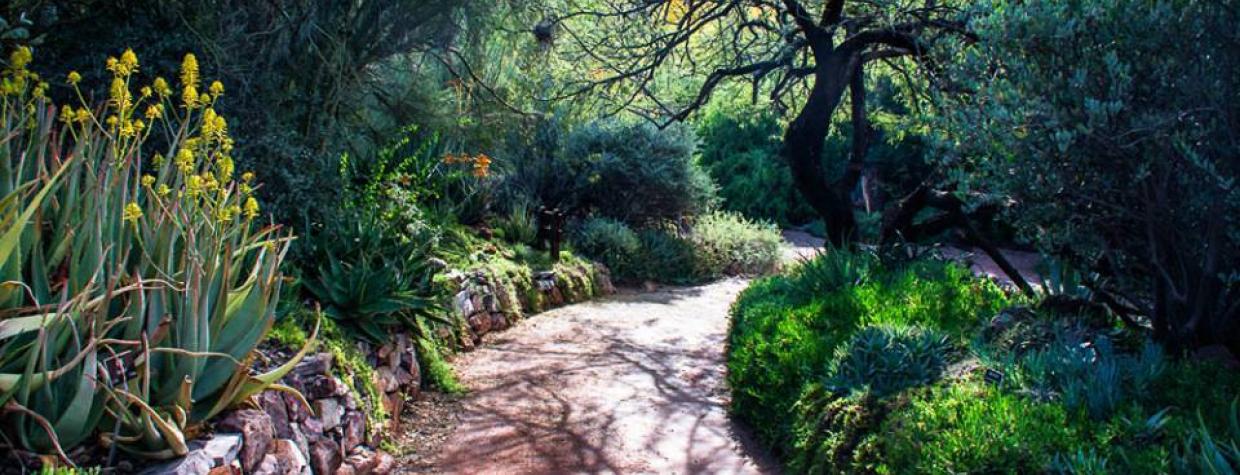Boyce Thompson Arboretum State Park, located near Superior, is the largest and oldest botanical garden in the state. The arboretum’s 323 acres are home to 3,200 different desert plants, more than 230 bird species and 72 terrestrial animal species. And now, the arboretum has a new director: Dr. S.H. "Sy" Sohmer.
Sohmer has more than 40 years of experience and research in classical botany and taxonomy. He's currently based out of Washington, D.C., where he’s worked the last two years as a research associate at the Smithsonian Institution. He also works as a faculty affiliate at George Mason University in Virginia. He'll soon make the move to Arizona to assume his new position at the arboretum. We asked him a few questions about himself, his background in botany and his new position.
Tell us a bit about your background and experience in botany.
I’m a classically trained taxonomist. My M.S. is from the University of Tennessee, and that’s where I really got my botanical training. From there, I went to the University of Hawaii and got my Ph.D. in systematic botany. My dissertation there was on what we thought was an endemic genus — a plant or something found nowhere else. It was an endemic genus found, they thought, only in Hawaii, and to my good fortune, there seemed to be one species, an outlier, that was found in the Austral Islands, which are south of Tahiti. I was able to get a grant from the National Science Foundation and go down there.
I really haven’t been able to do research for many years, because I’ve been in administration, but my interests still are with a genus in the coffee family called Psychotria. The coffee family is one of the largest woody families in the world, and Psychotria is one of the largest genera of woody plants in the world. I’ve done revisions of this genus for the Hawaiian archipelago, for the Philippine archipelago and for Papua New Guinea, where I spent a year as a forest officer.
What attracted you to the position of director at Boyce Thompson?
Well, the reason I know the arboretum is because I’m on the board of Biosphere 2. I’d go out to Biosphere 2, and I had heard about the arboretum, and so if I had time, I would drive over there on my own and just be a tourist. I loved it from the beginning. Most of my botanical work has been in the tropical rainforest, so this whole new world of desert plants, arid plants, was an eye-opener to me. I didn’t realize how diverse, how many species, how really interesting the desert flora was.
I had the good fortune of getting to know Mark Siegwarth, who was the former director, and when I would go up there, he would show me around and he was very kind to me; I appreciated that. So when this opportunity came up, I was in the right place for it, and I said, “OK, cool! I’d love to be director of that place!”
I’m going to be on a learning curve. One of the first things I want to do is go out and learn the local flora. I’m a botanist, so I know what a cactus is — I’ve seen many species of cacti — but I’m going to be on a learning curve. I’m going to grab someone at the arboretum who knows the flora and maybe have them take me out an hour or two each day, because I want to learn.
What do you hope to accomplish as the director?
I have some ideas, but until I really get fully on the ground there and really understand the rather complex way the place is governed, I think it would be presumptuous of me to declare what I want to do and what needs to be done. But I hope to be able to raise money for the organization in a variety of ways.
One thing I will bring to the arboretum are the connections to a lot of federal funding agencies and a lot of foundations, because I’ve worked with them. I hope that I can use this to the arboretum’s benefit.
What do you think are some of the challenges facing the arboretum?
Well I think there are a number, but they’re the same problems I’ve seen at other organizations — governance and funding, especially funding. That’s true with every organization I’ve ever been associated with. There’s a lot of good organizations out there competing for the same dollar.
What will your day-to-day look like as director, and how will it be different from positions you’ve held in the past?
One week I might have to spend my time putting up fliers; the next week I might have to spend all my time fundraising. When I do something, I’m on 24/7. That’ll be particularly true with the arboretum. I’ll be working with staff, working on goals with the staff and working with the board.
A very important part of my job will be to be able to publically explain what the importance of an arboretum is, especially the Boyce Thompson Arboretum, for the conservation and knowledge of the ecology and the species and the evolution of arid land plants. And observation is also a very important thing, especially with so many natural habitats disappearing.
It’s important because it’s a unique organization that holds in trust this wonderful diversity of arid land plants and hopefully will be able to maintain these species even as the habitat disappears around it. This will be a bastion where these species will always thrive and not go extinct, I hope.
— Emily Balli
For more information about Boyce Thompson Arboretum State Park, visit the park's website.

